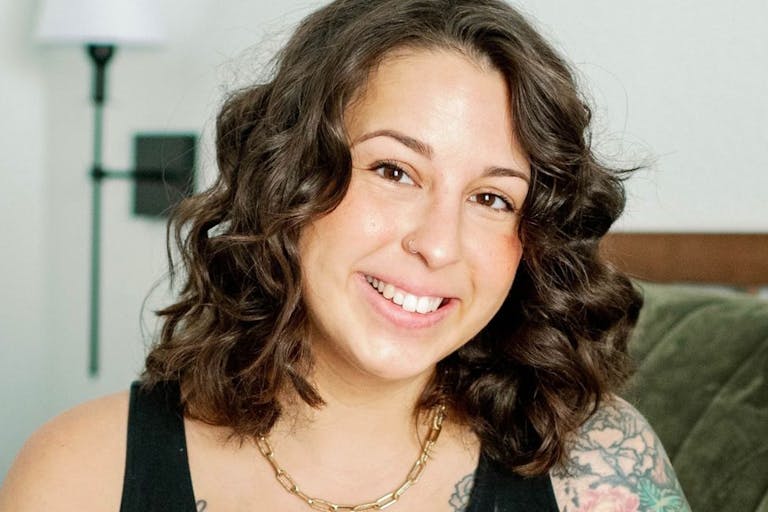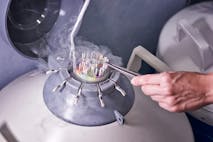
An unwanted abortion at age 18 sent Remy into a deep depression until she found healing
Sheena Rodriguez
·
Chrissy Teigen’s quest for four children includes both IVF and surrogacy
Model and strident Planned Parenthood supporter Chrissy Teigen and husband John Legend shared on Instagram that they have welcomed a baby boy via surrogate just five months after Teigen gave birth to a baby girl.
“For as long as I can remember, I’ve always wanted four children,” Teigen said in a post on Instagram. “As a little girl, 2 glow worms, and 2 cabbage patch dolls were perpetually in my arms, helping me stir in my pretend kitchen, watching Alf with me. We’d sleep together nightly, each getting the same amount of kisses as to not make the others jealous. My mom always searched for the Pound Puppy with 4 pups in her pouch, having no qualms about opening and peeking inside before purchasing.”
She added that after losing son Jack at 20 weeks, she planned to use “2 tandem surrogates, to each bring us a health baby boy or girl. Twins, kinda?!” But then she had second thoughts and decided she would try to carry a baby one more time and hire one surrogate. The couple started another round of IVF, which is how they created their two older children, Luna and Miles.
Jack was the only child the couple conceived naturally. He was born prematurely after Teigen was admitted to the hospital due to bleeding and though they tried to save him, Jack passed away during or shortly after his preterm delivery. Though Teigen later claimed this was an abortion, it was not, because the intention was never to kill Jack in the womb.
It is unclear how many embryos Teigen and Legend created in this last round of IVF, though based on her comments, they made at least three. Teigen carried one to a successful live birth — baby girl Esti, now five months. The surrogate, Alexandra, did not have a successful pregnancy with a second embryo, which Teigen said “didn’t survive.” She did become pregnant using a third embryo with baby boy Wren Alexander.
Teigen got the “twins” she had ‘ordered’ and now has the four living children she wanted.
The costs of IVF
IVF is expensive, but it comes with other costs as well. IVF has created many beloved children like Luna, Miles, Esti, and Wren. But far more lives have been lost during the IVF process than born.
IVF is carried out 2.5 million times annually around the world — but each year only 500,000 babies are actually born from the IVF procedure, according to research published in Reproductive Biomedicine Online. That means that each year, if just one embryo is created during each IVF cycle (the average is seven), at least 80% — at least two million — of the human beings created through IVF either die during the process, are frozen indefinitely, or are destroyed.
The IVF process has allowed living human beings at the earliest stages of development to be treated as products to be stored on a shelf until someone deems them ‘wanted,’ or tossed in the trash when they are labeled inadequate or unwanted. Embryos are labeled based on their “quality” and are destroyed for not being up to par.
Article continues below
Dear Reader,
In 2026, Live Action is heading straight where the battle is fiercest: college campuses.
We have a bold initiative to establish 100 Live Action campus chapters within the next year, and your partnership will make it a success!
Your support today will help train and equip young leaders, bring Live Action’s educational content into academic environments, host on-campus events and debates, and empower students to challenge the pro-abortion status quo with truth and compassion.
Invest in pro-life grassroots outreach and cultural formation with your DOUBLED year-end gift!
“When you are commissioning and swiping your credit card for a product, even one that you want badly, you are participating in commodification, regardless of whether the intended parents are the biological parents of the surrogate-born children. In this case, the products are human beings,” said Katie Breckenridge of the children’s rights advocacy organization Them Before Us.
A woman named Jennie shared with the Centre for Bioethics and Culture Network (CBC) that she got “swept up” in the IVF process, ultimately making 48 embryos. “We have 29 in storage,” she said. “We ended up with 30 embryos that got far enough along to be frozen… we have 29 sitting in storage that we pay $600 a month to keep there because we don’t know what to do with them.” Today, she struggles with guilt and doesn’t know what to do with the 29 frozen embryos she has left.
Ethical issues of surrogacy
Khloé Kardashian recently admitted that having a child using a surrogate was emotionally challenging for her and she recognized it was a “transactional” experience. Surrogacy allows couples to create their desired child, and the wealthier the couple is, the more options there are.
“I felt really guilty that this woman just had my baby and I take the baby and go to another room and you are separated,” she said. “It felt like such a transactional experience because it is not about him. I wish someone was honest about surrogacy and the difference of it. But it doesn’t mean it is bad or good. It is just very different.”
She also said she was a “control freak” with the surrogate and that using a surrogate made it difficult for her to bond with her son Tatum. “But a surrogate process — Kim knows — is very hard for me. It’s a mindf***. It is really the weirdest thing,” Khloé said. “I do feel less connected. People do say it takes a minute to feel connected but Kim said hers was easy. This is not easy.”
The risks associated with pregnancy are much higher for surrogates than for natural pregnancies because the surrogate’s body is more likely to recognize the baby as ‘foreign,’ which can lead to higher rates of complications. If it’s high risk for the mother, it’s high risk for the baby too.
Babies carried by surrogates have a higher risk of low birth weight and preterm birth in addition to the risk of major psychological impacts from being separated from their birth mother/surrogate. IVF also increases the risks of serious complications for children created using the technology.
Children created via IVF have an increased risk of low birth weight, premature birth, hospital admission, perinatal mortality, cerebral palsy, and a “significantly” increased risk of birth defects, compared to children conceived naturally. They are also at risk for high blood pressure, ADHD, autism, and depression, and girls conceived through IVF sometimes show advanced bone age and hormonal imbalances during puberty.
In addition, some studies show an increased risk of childhood illnesses, including cardiovascular problems, early-onset acute lymphoblastic leukemia, an increased risk of cancer in general, epigenetic disorders, cognitive impairment, and possible infertility.

Live Action News is pro-life news and commentary from a pro-life perspective.
Contact editor@liveaction.org for questions, corrections, or if you are seeking permission to reprint any Live Action News content.
Guest Articles: To submit a guest article to Live Action News, email editor@liveaction.org with an attached Word document of 800-1000 words. Please also attach any photos relevant to your submission if applicable. If your submission is accepted for publication, you will be notified within three weeks. Guest articles are not compensated (see our Open License Agreement). Thank you for your interest in Live Action News!

Sheena Rodriguez
·
Human Interest
Angeline Tan
·
International
Cassy Cooke
·
International
Angeline Tan
·
Human Interest
Nancy Flanders
·
Politics
Nancy Flanders
·
Human Interest
Nancy Flanders
·
Politics
Nancy Flanders
·
Human Interest
Nancy Flanders
·
Politics
Nancy Flanders
·
Human Interest
Nancy Flanders
·